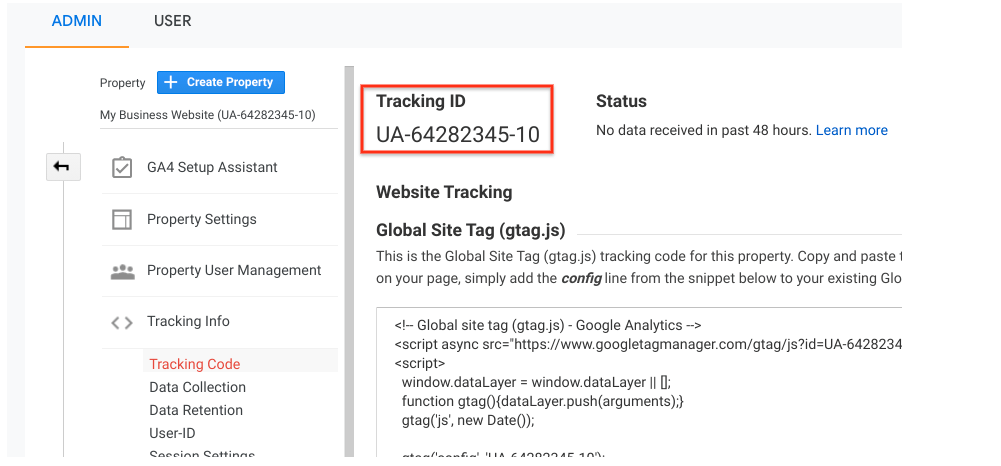Recognizing the Regulations: What Data Does Google Analytics Prohibit Collecting?
Wiki Article
Understanding the Art of Overcoming Information Collection Limitations in Google Analytics for Better Decision-Making
In the world of electronic analytics, the ability to remove purposeful insights from data is vital for notified decision-making. Google Analytics stands as an effective device for companies seeking to understand user habits, track conversions, and enhance their on the internet presence. Nevertheless, information collection restrictions within this platform can hinder the accuracy and depth of the info collected. To genuinely harness the possibility of Google Analytics for strategic decision-making, understanding the art of getting rid of these constraints is crucial. By using sophisticated methods and tactical methods, organizations can elevate their information top quality, unlock hidden understandings, and pave the way for more enlightened and effective choices.Data Top Quality Analysis
Evaluating the top quality of data within Google Analytics is a critical action in making certain the reliability and precision of insights originated from the gathered info. Data quality evaluation involves evaluating numerous facets such as accuracy, completeness, uniformity, and timeliness of the data. One key element to think about is information accuracy, which describes how well the information shows real values of the metrics being measured. Incorrect data can lead to damaged conclusions and misdirected business decisions.
Efficiency of information is another vital element in examining information quality. It includes ensuring that all essential data factors are accumulated which there are no gaps in the info. Insufficient data can skew evaluation outcomes and hinder the ability to get a detailed sight of individual behavior or site performance. Uniformity checks are additionally crucial in data high quality evaluation to recognize any disparities or anomalies within the data set. Timeliness is just as vital, as obsolete data might no more be appropriate for decision-making processes. By prioritizing information high quality analysis in Google Analytics, organizations can improve the integrity of their analytics records and make even more informed decisions based upon precise insights.
Advanced Tracking Methods
Using sophisticated monitoring methods in Google Analytics can dramatically enhance the depth and granularity of data gathered for even more detailed evaluation and insights. One such technique is event monitoring, which permits the tracking of particular communications on a web site, like click buttons, downloads of files, or video views. By implementing event tracking, businesses can gain a much deeper understanding of customer actions and engagement with their online material.Furthermore, personalized dimensions and metrics provide a method to tailor Google Analytics to certain company demands. Custom-made dimensions permit the creation of brand-new data factors, such as customer functions or consumer sectors, while customized metrics make it possible for the tracking of distinct efficiency indications, like revenue per individual or ordinary order worth.
In addition, the use of Google Tag Manager can improve the execution of tracking codes and tags across a web site, making it easier to handle and release sophisticated monitoring arrangements. By utilizing these innovative tracking techniques, companies can open useful understandings and optimize their online approaches for better decision-making.
Custom-made Measurement Execution
To improve the depth of information collected in Google Analytics beyond advanced tracking methods like occasion monitoring, companies can apply customized measurements for more customized insights. Customized dimensions allow services to define and accumulate details information points that are pertinent to their distinct goals and goals (What Data Does Google Analytics Prohibit Collecting?). By appointing custom measurements to various elements on a website, such as customer interactions, demographics, or session information, organizations can obtain a much more granular understanding of exactly how individuals engage with their on-line residential properties
Attribution Modeling Strategies
By using the ideal attribution design, companies can accurately associate conversions to the suitable touchpoints along the client trip. One common acknowledgment model is the Last Communication model, which offers credit history for a conversion to the last touchpoint a customer communicated with before converting.
that site
Data Tasting Avoidance
When taking care of large quantities of data in Google Analytics, getting over information sampling is important to ensure accurate insights are obtained for educated decision-making. Information tasting happens when Google Analytics estimates patterns in data instead of assessing the complete dataset, possibly bring about manipulated results. To prevent data tasting, one efficient technique is to reduce the day array being examined. By see this website concentrating on much shorter time frameworks, the probability of encountering experienced information declines, offering a much more accurate depiction of user habits. Additionally, using Google Analytics 360, the costs version of the system, can aid reduce sampling as it allows for greater data limits before sampling starts. Carrying out filters to narrow down the data being analyzed can additionally assist in staying clear of sampling concerns. By taking these proactive steps to decrease data sampling, businesses can extract much more precise understandings from Google Analytics, bring about far better decision-making and improved general efficiency.Conclusion
In verdict, mastering the art of getting over data collection limitations in Google Analytics is vital for making educated choices. By performing a complete information high quality evaluation, executing innovative tracking methods, using personalized measurements, using acknowledgment modeling methods, and staying clear of data sampling, services can make certain that they have exact and trusted data to base their decisions on. This will ultimately cause a lot more reliable techniques and better results for the company.
Report this wiki page